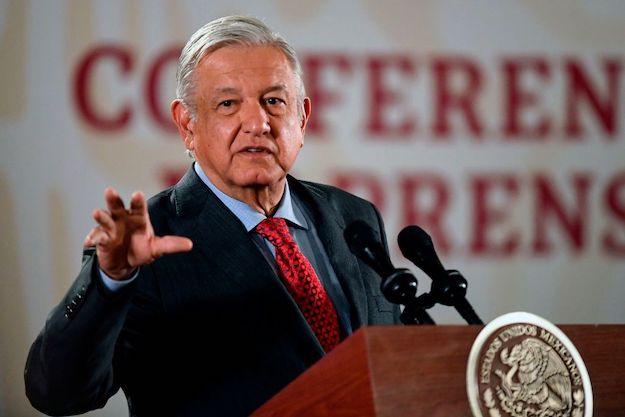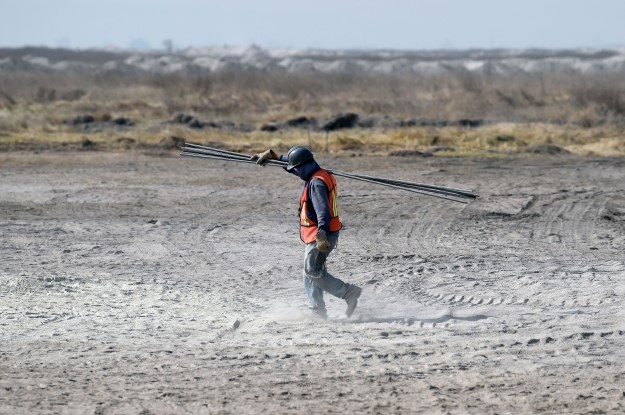MEXICO CITY – Since taking office on Dec. 1, 2018, Andrés Manuel López Obrador has altered everything from the physical seat of presidential power to the sports Mexicans are encouraged to play (baseball, mostly).
But changes in Mexico’s judiciary – some already completed and others on the horizon – may have the most lasting impact on what he is able to accomplish as president.
Following Justice Eduardo Medina Mora’s unexpected resignation last month, amid widespread corruption accusations and reports of government pressure, López Obrador was given an opportunity to name a judge to the Supreme Court for the third time since becoming president. On Nov. 22, AMLO, as the president is known, sent a list of three candidates to the Senate, which now has 30 days to make its selection.
Those candidates have diverse backgrounds – and reputations. Two are current government officials and all three have at least some past connection and sympathy for the president’s political project. The degree of their support could come to bear on a host of government policy priorities expected to reach Mexico’s highest court.
“The people trying to challenge AMLO’s programs are looking for a counterweight in the judiciary that doesn’t currently exist in Congress,” said Andrea Pozas-Loyo, a law professor at Mexico City’s UNAM university. “The president’s entire agenda is going to pass through the courts at some level.”
That will likely include aspects of AMLO’s newly minted National Guard, an austerity program that has reduced the size and salaries of government bureaucracy, infrastructure projects such as a tourist train through Mexico’s southeast, and recent changes to asset forfeiture rules that give the government widespread authority to sell property seized from allegedly corrupt businesses and individuals.
On all counts, Medina’s resignation could loom large. Supreme Court justices’ staggered 15-year terms mean that most Mexican presidents get to name at least three appointees while in office. But halfway through his presidency, when Justice José Fernando González’s term expires in 2021, AMLO will have named at least four of the Court’s 11 sitting justices. That means that his appointees alone could limit constitutional challenges, including to government programs, that require at least eight votes for general application.
“The Supreme Court will be extremely important in consolidating the reforms AMLO’s administration wishes to carry out,” María Novoa, director of the justice program at México Evalúa, a Mexico City-based think tank, told AQ.
Still, there are limits to how reliable AMLO can expect his Supreme Court picks to be. Lack of public interest, norms that grant considerable leeway to the president in making nominations, and the structure of Mexico’s nominating process itself mean potential justices’ approach to the law and constitutional interpretation are often made clear only after they are on the bench.
Arturo Zaldívar, the current president of the Court who is widely seen as supportive of López Obrador’s policy aims, was appointed by former President Felipe Calderón, a conservative. López Obrador is considered a leftist, but his second Court appointee, Yasmín Esquivel, has expressed opposition to abortion rights and adoption by same-sex couples (she is also the wife of a close AMLO adviser).
“The vetting system in Mexico is extremely weak, and the candidates’ appearances before the Senate are limited both in terms of time and in the depth of questioning,” said Martín Vivanco, a lawyer and political analyst.
Mexico’s judiciary has also developed a level of internal independence since reforms in 1994 gave the Court its current form, experts say. AMLO’s nominees will face institutional pressure not to give the president a totally free ride. That Medina’s nomination in 2014 sparked vocal opposition from civil society (due to his closeness to then-President Enrique Peña Nieto) may suggest that the public at large is starting to notice what happens on the Court.
Lower levels of the judiciary, however, still often operate in darkness. Corruption, nepotism and a lack of robust legal training for mid-career lawyers can make the courts uneven and prone to political influence. Many states have had difficulty coping with a judicial reform, approved in 2008, that shifted Mexico’s written legal system to an oral, accusatory one.
“It’s understandable that we pay the most attention to what happens at the Supreme Court, but the president’s agenda has to pass through lower courts as well. It’s important to pay close attention to the judicial branch as a whole,” said Pozas-Loyo.
To that effect, lower courts have become a target of AMLO’s reform agenda. Since he became Court president in January, Zaldívar has emphasized and supported corruption investigations related to judges and court officials. On Nov. 22, Isidro Avelar Gutiérrez, a magistrate from the state of Jalisco, was arrested by the Mexican Attorney General’s office on suspicions of illicit enrichment.
AMLO’s allies in Congress have also played a hand in reorienting the judiciary. Legislators have presented more than 50 proposals related to the justice system since AMLO took office, according to a recent count by México Evalúa.
Many of those changes were promoted by AMLO’s Morena party, including the elimination of state judicial councils and an extension of circumstances under which suspects can be held prior to trial. On the whole, the reforms “indicate a move toward greater centralization,” said Novoa, which may leave gaps in Mexico’s transition to the accusatory justice system.
“A strong institutional framework … designed to replace the previous criminal justice system is in danger of being left behind,” Novoa said.
Many observers also expect Congress to pursue a more comprehensive judicial reform during AMLO’s term. If that includes proposals such as those to implement more rigorous processes for selecting judges, such reform could help strengthen Mexico’s legal institutions. But other proposals, such as a plan floated earlier this year by Morena legislators to expand the size of the Court by adding a five-member chamber dedicated to corruption crimes, could weaken judicial independence, said Laurence Pantin, who heads México Evalúa’s transparency in justice program.
“Not only would the Supreme Court start analyzing crimes, rather than focusing on the constitution,” Pantin told AQ. “It would also give one party the chance to name a majority of the justices on its own. It would change the Court for decades.”
—
Russell is a senior editor and correspondent in Mexico City for AQ. Follow him on Twitter @BenPaulRussell









